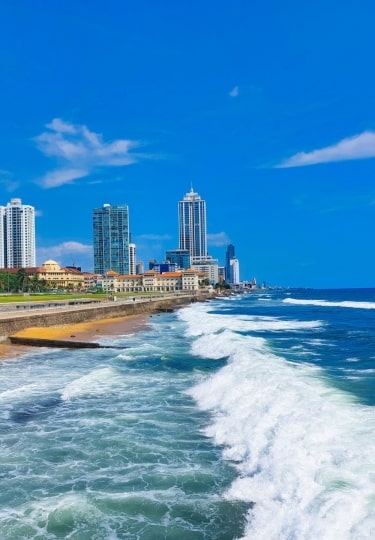The best time to visit Sri Lanka, which lies just north of the equator in the Indian Ocean, is between December and April, outside the monsoon season.
Sri Lanka has a tropical climate, meaning it is hot and humid year-round, but with distinct regional variations. There are two monsoons with a rainy period in between, and rainfall varies dramatically depending on whether you are in the north, the south, or the central mountains. The coastal lowlands are generally hotter than the mountainous center, with constant temperatures ranging from 84°F (29°C) to 89.6°F (32°C).
Generally speaking, December to April is the driest time in the south and south west, where you’ll find Colombo, the historic town of Galle, and some of the finest beaches. Days and nights will be warm and humid and there may be occasional downpours, but this is part of everyday life in the tropics.
Visiting Sri Lanka By Season
Summer
In June, July, and August, the yala, or southwestern monsoon, brings heavy rains to the south and southwest coasts, tailing off as the months pass. August, for example, receives 4 inches (103mm) of rain, just half that of July, which averages 8.1 inches (208mm).
While it’s raining in the south, the east is dry and sunny, making August a good month to visit the east coast.
During these months, the north of the island is also generally clear and sunny, and busy with visitors. It’s these regional variations that contribute to Sri Lanka’s success as a year-round destination; you can always find sunshine somewhere.
Fall
September, October, and November see the weather changing in Sri Lanka. Temperatures average around 86°F (30°C). The southwestern monsoon is usually over by September, a month in which Colombo receives on average 7.2 inches (184mm) of rain, but in October, humidity increases again and the capital can experience 14.1 inches (360mm) of rain.
The masa, or northeast monsoon, affects the north and east of the island between October/November and January.
Winter
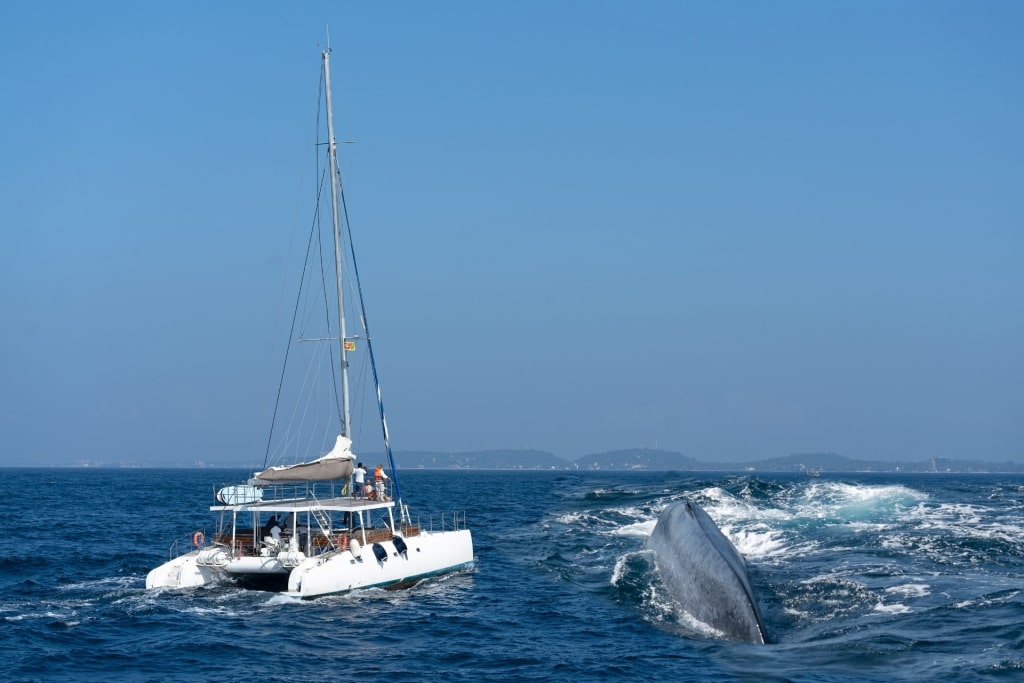
Whale-watching in Sri Lanka
December, January, and February in the south and southwest are peak season. Days are hot and sunny, and you can expect average temperatures of 86°F (30°C) and just 2.9 inches (74mm) of rain.
This is the best time for visiting beaches in Sri Lanka, for sightseeing, and for wildlife-spotting, as the coastal waters are abundant with dolphins and whales. Tea Country, in the central highlands, also experiences dry, hot weather during this period, although temperatures drop at altitude.
The island gets busy in December with visitors coming for their Christmas vacation (the island is mainly Buddhist but Christmas is embraced nonetheless).
The full moon in January is a busy time in Colombo, when the colorful Duruthu Perahera Festival takes place, commemorating the Buddha’s first visit to the island with lights, parades, and dancing. The world-famous Galle Literary Festival also usually falls in January or February.
Read: Best Things to Do in Colombo
Spring
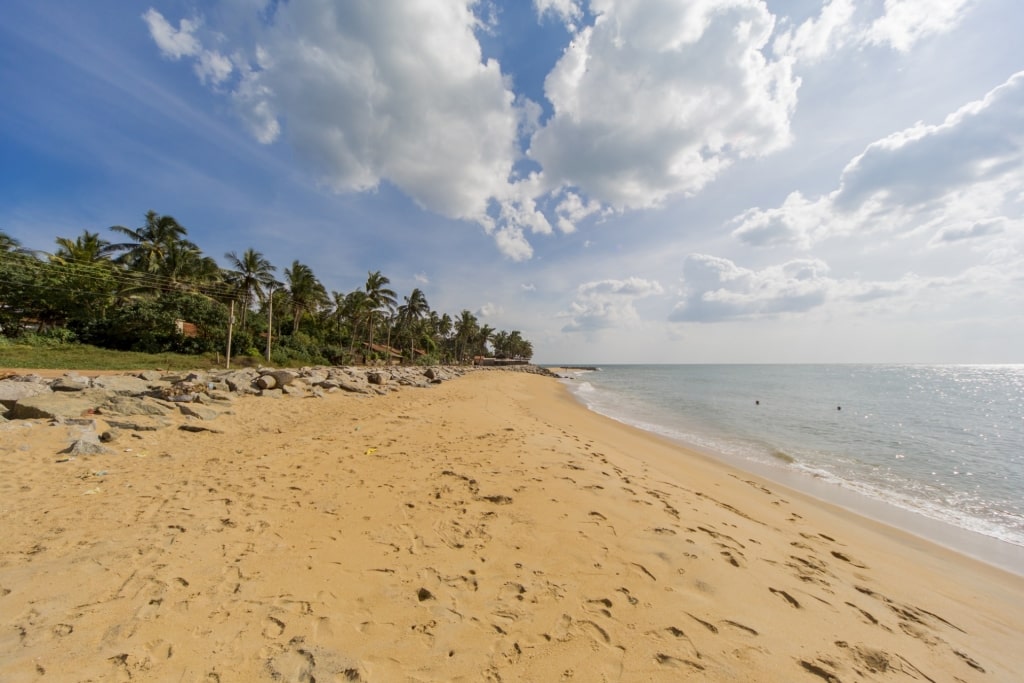
Negombo Beach
March and April continue to be peak tourist season with warm, sunny weather and plenty of whale-watching. April 14 is Sinhalese and Tamil New Year, a time of great celebration.
May brings the beginning of the yala, or southwestern monsoon, when the south and west of the island can experience heavy rain; May, for example, sees around 14.2 (361mm).
Conversely, May is regarded as the best month to visit the “Cultural Triangle” of Dambulla, Anuradhapura, and Sigiriya, three UNESCO World Heritage Sites in the northern plains.
When Is Rainy Season?
Sri Lanka has two monsoons, one in the south, from late April to early August, and one in the north, between November and January. October tends to be a rainy month all over the island. May and October are the wettest months in Colombo, receiving an average of 14.1 inches (360mm) each.
When Is High Season?
High season in Sri Lanka varies according to region. In the south, where most visitors start their journey, December to April is regarded as peak tourist season. This is the best time to go to Sri Lanka for sunshine, clear skies, beaches, and marine life.
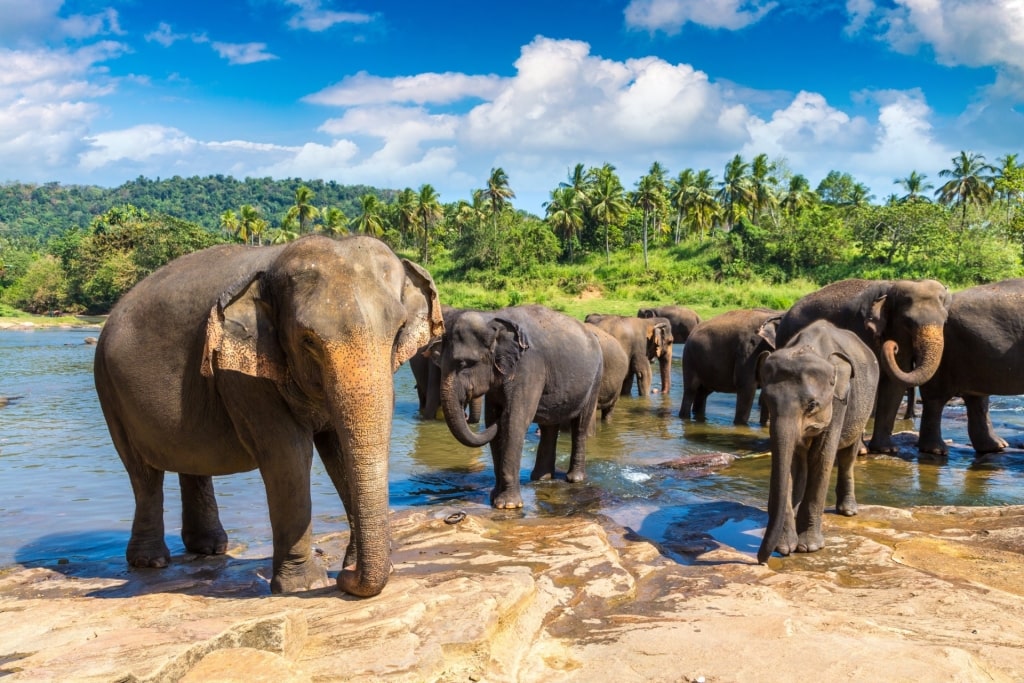
Elephants in Sri Lanka
It’s also the best time for wildlife spotting on land. The drier conditions mean there’s less water in the wildlife parks and elephant, buffalo, and leopards are drawn to the watering holes.
When Is Shoulder Season?
Shoulder season in Sri Lanka falls between the end of the monsoons and the beginning of the dry season. In the south and west, this means August and September, after the southwestern monsoon, and to an extent, December, before the Christmas and New Year’s peak.
When Is Low Season?
Low season in Sri Lanka coincides with the two monsoons, so May to July in the southwest and from November to January in the north. October and November are the only months of the year when travel to the central hills is not at its best, because of overcast skies and sometimes heavy rain.
Read: The Ultimate Guide to Sri Lankan Food
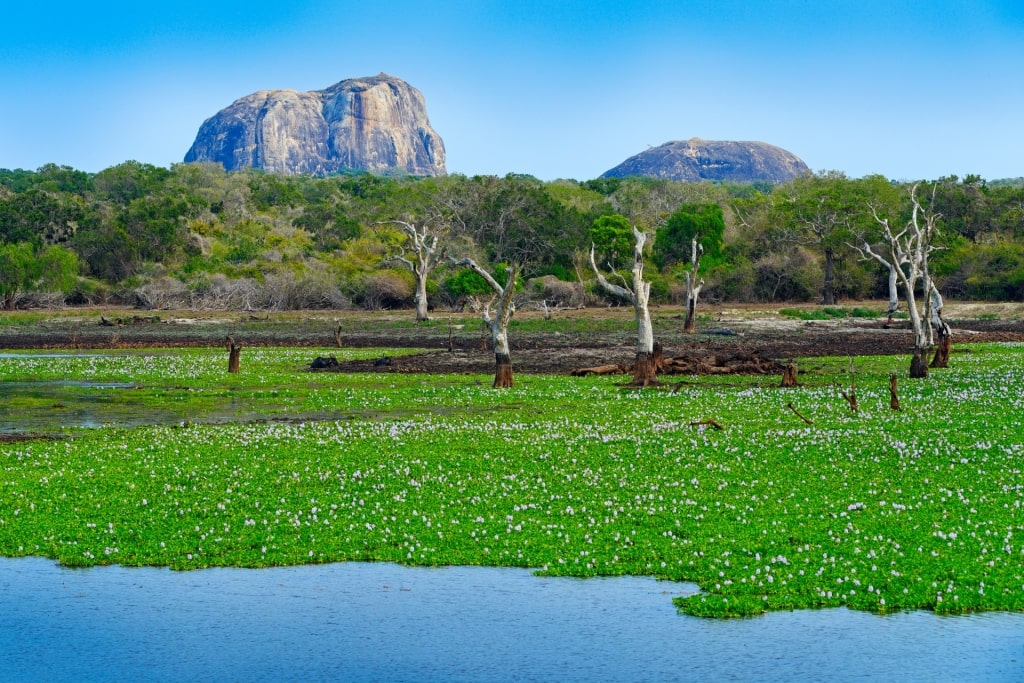
Yala National Park
Are you ready to embrace the dazzling culture and landscapes of Sri Lanka? Browse our cruises to Sri Lanka and plan your Asian adventure.
